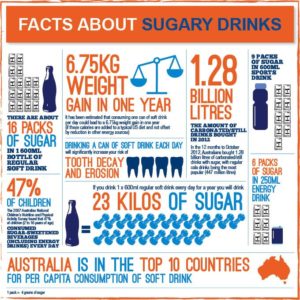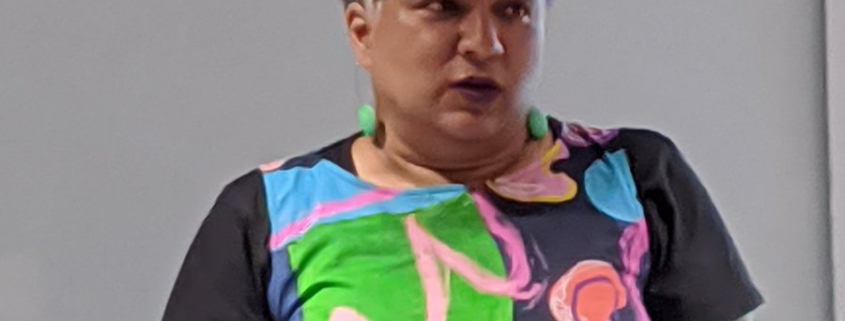As a clinician and educator, I have long been interested in how to prepare nurses for professional practice. Schon uses a metaphor of terrain made up of high, hard ground overlooking a swamp which Street (1991) has extended to nursing practice. While some clinical problems can be resolved through theory and technique (on hard ground), messy, confusing problems in the swampy ground do not have simple solutions, but it is critically important to practice that they are resolved. One way in which I have attempted to open up and create new collective reflective spaces is through using forum theatre to facilitate reflection and culturally safe practice.
It is the swampy ground that interests me, where utilitarian, techno-rational solutions are limited. As pressure increases in undergraduate nursing curricula, having the time to develop skills and capacities for negotiating ethical relationships can be compromised. Simultaneously the concept of intersectionality, offers an intervention to challenge a reductionist focus on a single axis of difference within a largely white feminist nursing frame. Can the concept of intersectionalitybe integrated into nursing in ways that are true to the politics that black feminists aspired to? In this article written with colleagues at Abertay University, Scotland we begin to examine these issues as part of a larger conversation.
Ion, R., DeSouza, R., Kerin, T., Teaching ethics: Intersectionality, care failure and moral courage, Nurse Education Today (2017), doi:10.1016/j.nedt.2017.12.023
Highlights
- Provides a critical discussion of ethics teaching arguing that it must recognise frameworks from outside the Anglo-European tradition.
- Drawing on examples of care failure, racism and sexism, argues that there is evidence that some nurses struggle to practice in accordance with ethical guidance.
- Identifies intersectionality, the culture of practice and moral courage as fundamental to enabling nurses to practice in accordance with ethical guidance.
- Presents a case for an approach to applied approach ethics education, which recognises the complexity and diversity of practice.
Introduction
Ethical practice is an unambiguous requirement for nurses and midwives in guidance from across the world (ICN 2012). As a profession characterised by its often intimate involvement with vulnerable others and where matters of life and death and all points in between are at stake, it is right and proper that our respective professional organisations should set out clear expectations for practitioners. In this paper we argue that while an expectation of ethical nursing is commendable, its realisation in the real world is often far from straightforward. In doing this we address three issues. First, we draw attention to some every-day and some less common ethical dilemmas which nurses encounter – we argue that these constitute complex problems, which are further compounded by situational and cultural factors. Second, we expose the reality of unethical practice, arguing that it may be more common than the profession would like to believe. Finally, we consider the role of education in preparing and supporting the nursing and midwifery workforce. We argue for a reinvigorated approach to ethics education, which takes account of the reality of contemporary nursing and recognises the complexity of practice – here we pay particular attention to intersectionality, power, oppression and moral courage. We conclude by presenting some thoughts on how this might be operationalised in curricula.
Every-day and unusual problems.
While some ethical issues may be less common than others, nurses are faced with real world ethical dilemmas on a daily basis. By ethical, we mean decisions about how to engage with others, or respond to situations where action or omission might adversely impact some aspect of another’s experience. Ethical problems do not just involve the interface between nurses, patients, families and communities, but also extend to inter-staff relationships, and relationships between staff and organisations. Examples might include questions about how best to secure the consent of a patient with dementia in order to assist with personal care, to decisions about sharing information with a patient about a poor prognosis, or whistleblowing when faced with care failure. We contend that these negotiations require a complex blend of technical skill, knowledge and sensitivity. It is perhaps easier to see the ethical challenges, which might be raised in the breaking of bad news, or when considering whistleblowing – few would dispute the difficulties associated with these scenarios, but an ethical dimension may be less immediately obvious in the former, but much more frequently encountered case of consent to personal care. With a little examination, however, if we recognise that personal care involves an intimacy, which is defined by multiple factors including age, gender, culture, class, sexuality and previous experience, the issue becomes less opaque. To understand the complexities of providing personal carefully, and to deliver it professionally, requires significant knowledge of all of these areas, as well as the ability to deploy that knowledge, and a concomitantly high level of technical skill. Personal care is not a task, it is an action loaded with significance for both the recipient and the caregiver and is embedded in relationships shaped by social, cultural and historical factors. Similar points might be made about the use of restraint in mental health settings. An instrumental view of this intervention might frame it as a technical skill requiring training in physical procedure and some knowledge of risk. This would be to overlook the huge personal significance that should be attached to the act of preventing a fellow human being from retaining control of their body and movements – action which is a legal expression of power over another, and which in other circumstances would be considered to be a case of assault. Few would argue that this intervention should be used sparingly, but for front line staff it may sometimes be the only option. In these circumstances, while adherence to policy and guidance is critical, the extent to which these can ever address the complexity and sensitivities involved in exerting physical power over another is questionable – in our view action in this context also requires an ability to draw on and apply a deep ethical knowledge.
Similarly, while policy can guide those nurses who provide care for hostile combatants in a military situation, or with prisoners in high security settings, or in the complex and politically charged area of refugee health care in detention centres, its application requires both an understanding of, and an ability to operationalise, ethical thinking. Schon’s (1987) metaphor of the world of professional practice resembling terrain made up of high, hard ground overlooking a swamp is useful here. As, Street (1991) observes, there are some clinical problems that can be resolved through theory and technique (on hard ground), while messy, confusing problems in swampy ground do not have simple solutions, but their resolution is critical to practice.
Evidence of unethical practice.
Given then the importance assigned by the profession to ethical practice and the potential challenges to its realisation in the often messy clinical world, it makes sense to take stock and reflect on the extent to which we can be confident that nurses practice ethically and manage ethical problems with confidence. Evidence of racism, gender discrimination and care failure tell us that this may not always be the case and that we have good reason to be concerned about the ability of some nurses and midwives to practice according to ethical guidance. With regard to racism, DeSouza’s (2014) study of the maternity experiences of Korean new mothers in New Zealand and Mapedzahama’s (2012) study of black African nurses working in Australia shows that racism is experienced both as a care recipient and as a colleague. A similar picture emerges regarding gender diversity. Discussing the situation in the United States and Canada, Kellett and Litton (2016) argue that many educational programmes have failed to grasp this agenda and thereby fail to adequately prepare students for the world of practice.
In relation to care failure, Reader & Gillespie (2013), noted evidence of patient neglect and poor care across a range of settings in Australia, Europe and North America. These included failure to meet essential care needs, and examples of abuse and neglect. We should be concerned about the extent to which those who participate in failures of this type understand the requirement for ethical practice. In addition, a review by Jackson et al. (2014) indicates many of those who witness poor care, make the decision to let it go without censure or sanction. Although this may be understandable in some circumstances, for example, where these is a genuine fear that harm may come to the whistle-blower, inaction of this type is surely not underpinned by a recognisable ethical framework, nor is it in keeping with professional guidance. In light of the above, we contend that, there is reason to believe that some nurses struggle to practice in accordance with professional guidance in this area.
Education and the ethics agenda.
Our focus here is on the role of education in the development and maintenance of ethical practice. However, educational preparation can only play a part in this process. Registrants will spend the great majority of their time in practice and it is therefore imperative that care is taken to ensure that, as far as is possible, the practice environment is one in which doing the ‘right thing’ is always the easier option. Given this, what then can education do?
It is conceivable, although hopefully very unlikely, that some nurses consciously select to behave unethically in spite of a detailed understanding of the field and their responsibilities to patients, carers and colleagues. We consider these individuals to be rogue practitioners who have no place in the profession – the role of education here is to try to identify and screen out such people at the earliest point possible – we accept that while this is desirable the extent to which it is achievable is questionable.
It may be that some others who breach ethical guidance were fully prepared in their undergraduate studies for the challenges they might face, but that time has somehow diluted and dissipated this preparation. If this is the case, then educators need to consider how they might work with students to ensure that learning occurs but, equally importantly, that it is maintained and built upon in the years after registration. It is also possible that initial preparation programmes failed to deliver on the ethics agenda – either through significant omission, or by delivery in a manner, which framed ethics as an abstract subject without a clear practical application. The challenge here is to for educators to deliver ethics teaching in a way which resonates with the reality of practice and which is clearly of practical benefit to students. The principle in these circumstances should be to create an ethics, which empowers nurses to do the right thing, rather than one, which constrains them from doing the opposite.
What might an education in applied ethics for nurses look like?
The extent to which educational programmes address ethics is probably dependent to some extent on faculty make up. Where individuals have an interest in the topic, it is likely to prosper. Conversely, where this is not the case, its treatment is likely to be more cursory. Some version of Kant’s categorical imperative, the utilitarianism of John Stuart Mill, virtue ethics and the principles of autonomy, beneficence, non- maleficence and justice are likely to be present in most courses, albeit to a greater or lesser extent. There is no question that all have much to offer, but nursing is a global profession and our major cities are culturally diverse. Add to this, the equally heterogeneous health workforce, and it becomes clear that the ability to work with complexity, ambiguity and uncertainty in a culturally safe way may require considering ethical frameworks from other locations if we are to avoid the pitfall of assuming that the common ethical frameworks of Western Europe and North America make sense to populations whose belief systems were forged elsewhere. Assuming therefore, that a commitment to common ethical framework will suffice may be fundamentally flawed – educators need to prepare nurses for a world, which will require them to draw on knowledge of a range of philosophical ideas, including those outside Anglo-European traditions in order to determine the appropriate course of action in a given situation.
As well as taking this broader perspective, educators also need to consider the growing interest in making gender, race and class central to equity agendas in health. Typically, the reductionist single focus of biomedicine has privileged these social structures in isolation from each other viewing them as parallel, rather than as being mutually constitutive and maintaining each other. Derived from African American theorising and activism, the view that systems of oppression are interlocking assumes that attempts to dislodge one axis of oppression will impact on another. Given we all occupy positions in society that privilege particular identities whether gender, race, or class, intersectionality is a prompt to consider how these positions influence and affect one another and where power lies (or doesn’t lie). It is not enough to merely look outside ourselves for explanation; we must also examine our own complicity in oppression. This examination must consider individual and institutional raced, classed, and gendered identities and how they impact on the work we do (Van Herk et al. 2011). In our view, educational programmes should provide space for critical review of staff and student individual gender, race, and class identities, as well as how our intellectual and political institutions and their agendas reinforce or diminish those identities in both the academy and in the clinical setting. Our point here is that ethical practice requires an awareness of the multifaceted nature of power and disadvantage, which cannot be found in more traditional one-dimensional accounts of health inequality.
Ethical practice requires action as well as the ability to recognize difficulties and dilemmas. Roberts (2016) has noted that inaction in the face of poor care is often justified by explanations, which focus on situational factors. Drawing on Sartre’s notion of freedom, he argues that these justifications do not stand up and that we are fundamentally free to act, albeit with consequences, if we chose to do so. Here inaction is a choice which is freely made and which privileges the needs of the self over ethical action. For many, the idea of sacrificing self-interest in preference to speaking out against injustice is understandably frightening and plays into the kind of hero stereotype which few can live up to. These fears may be particularly acute in the current economic circumstances where concerns about job security are widespread. If then we are to expect nurses to manage complex ethical problems and to be accountable for these we need to ensure that our educational programmes do more than just provide theoretical understanding. They must seek to equip practitioners with the moral courage and personal resilience required to do the right thing in difficult circumstances – specifically to take action based on one’s ethical beliefs in the knowledge that some adverse personal outcome might result. While we offer no template for how this might be done, as this will be dependent on circumstance, need and resources, it is clear that it cannot occur in isolation. Drawing on the work of Gallagher (2011) moral courage is most likely to be demonstrated when the desire of the individual to do the right thing is matched by a practice culture where doing so is the easier option. Educators must then work with their clinical partners to ensure that students are only placed in environments which have an explicit commitment to ethical practice, and where this is demonstrated through the attitudes and behaviours of all staff and in the leadership style of managers. Without this, we run the risk of expecting ordinary people to behave heroically in the kind of toxic environments, which were described by Francis (2015) in his reflections on care failure in the UK.
Conclusion
While ethical practice lies at the heart of good nursing care, evidence of poor care, racism and sexism suggest that some nurses fail to live up to the standards set by the profession. There may be a number of reasons for this, including both the complex nature of care and the diverse populations which nursing serves. Elements of educational preparation may also be flawed. We have argued that in order to address this agenda, educators need to deliver ethics teaching in a manner, which recognises this complexity and diversity. To do this, they must to move away from a mono-cultural approach, which privileges the Anglo-European tradition. This revised approach should consider the issue of intersectionality – a perspective that provides space to consider issues such as power and control in health, social and structural inequities in practice and in education, and the role of class, gender, ethnicity and age in the development of health problems and the experience of health care.
Simply educating nurses about ethics will not on its own solve the problem. We also need to help practitioners to develop their capacity to make ethical decisions and to take action to the basis of these. Ultimately, the environments in which nurses work need to be places which welcome critical reflection and value open discussion. If these things can be achieved, then practicing ethically by managing the everyday and sometimes extraordinary moral dilemmas, which face nurses, may become an easier option.






